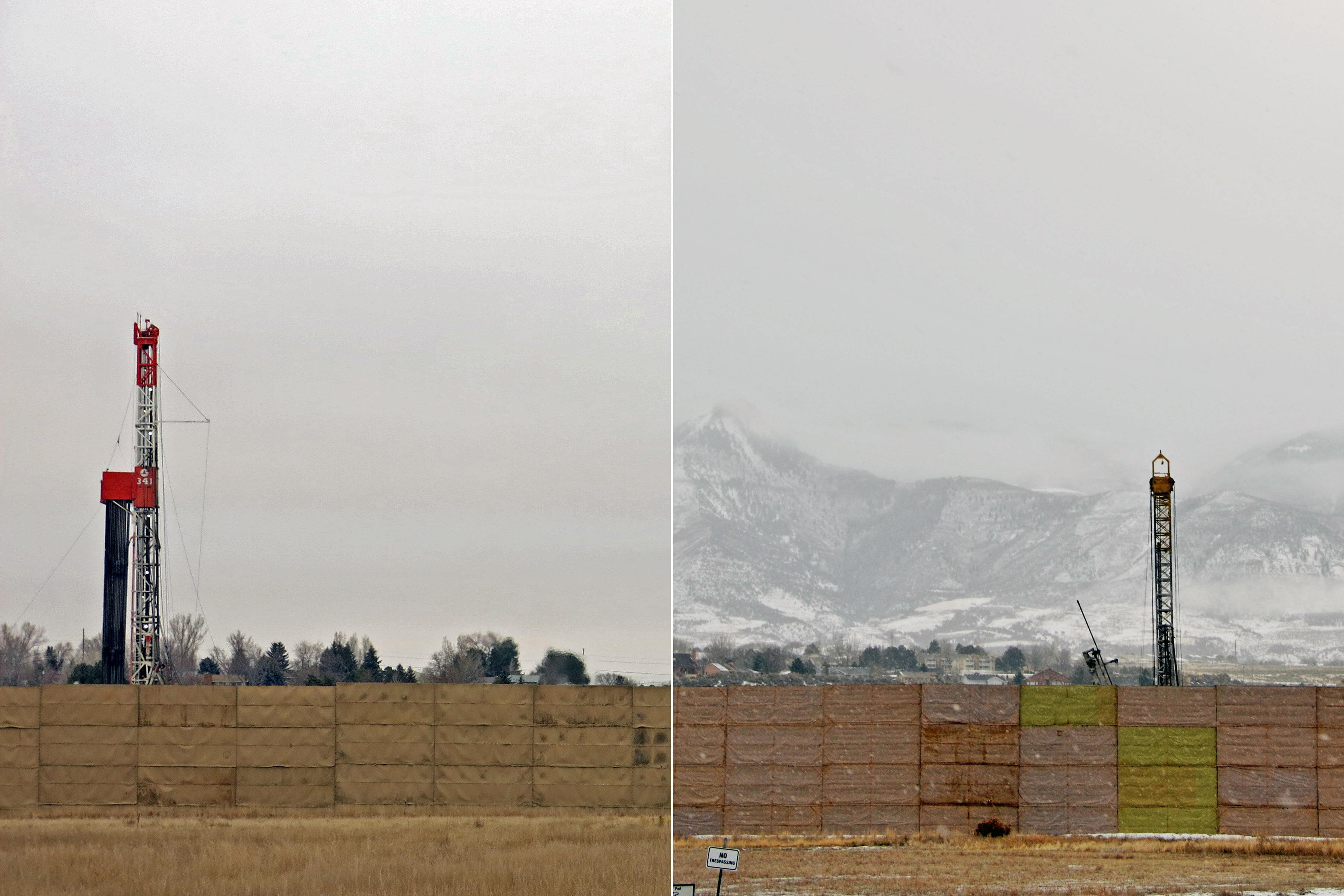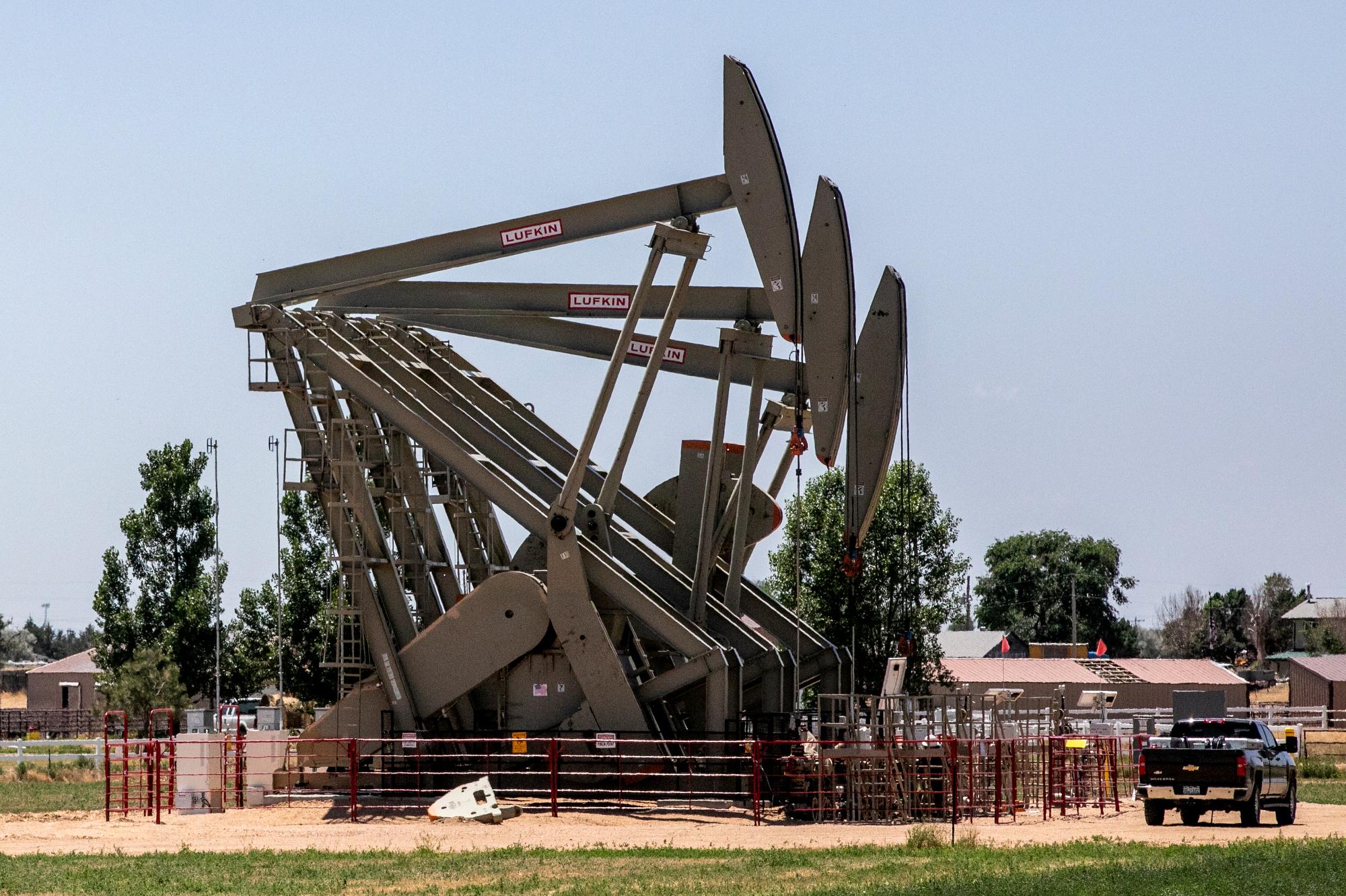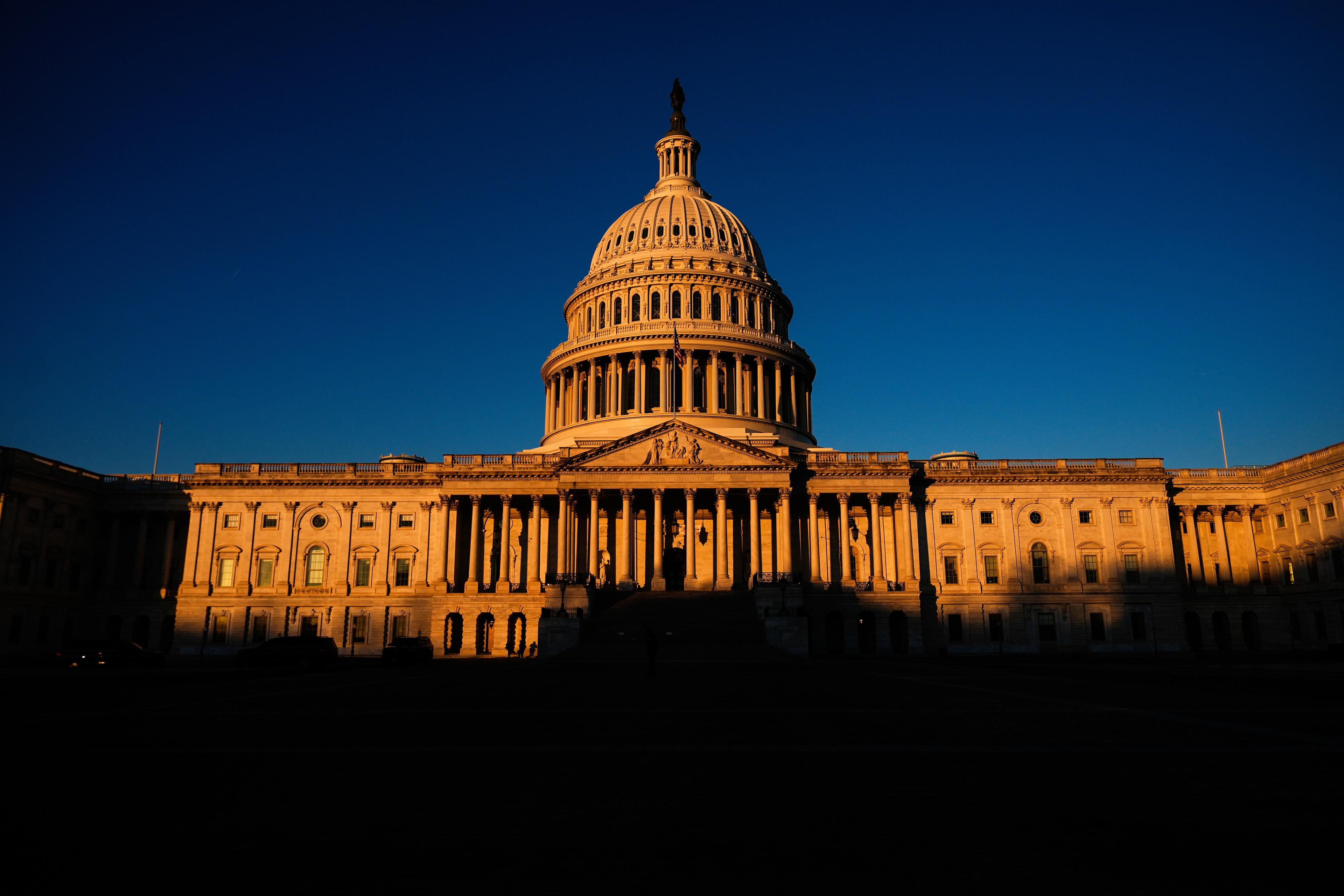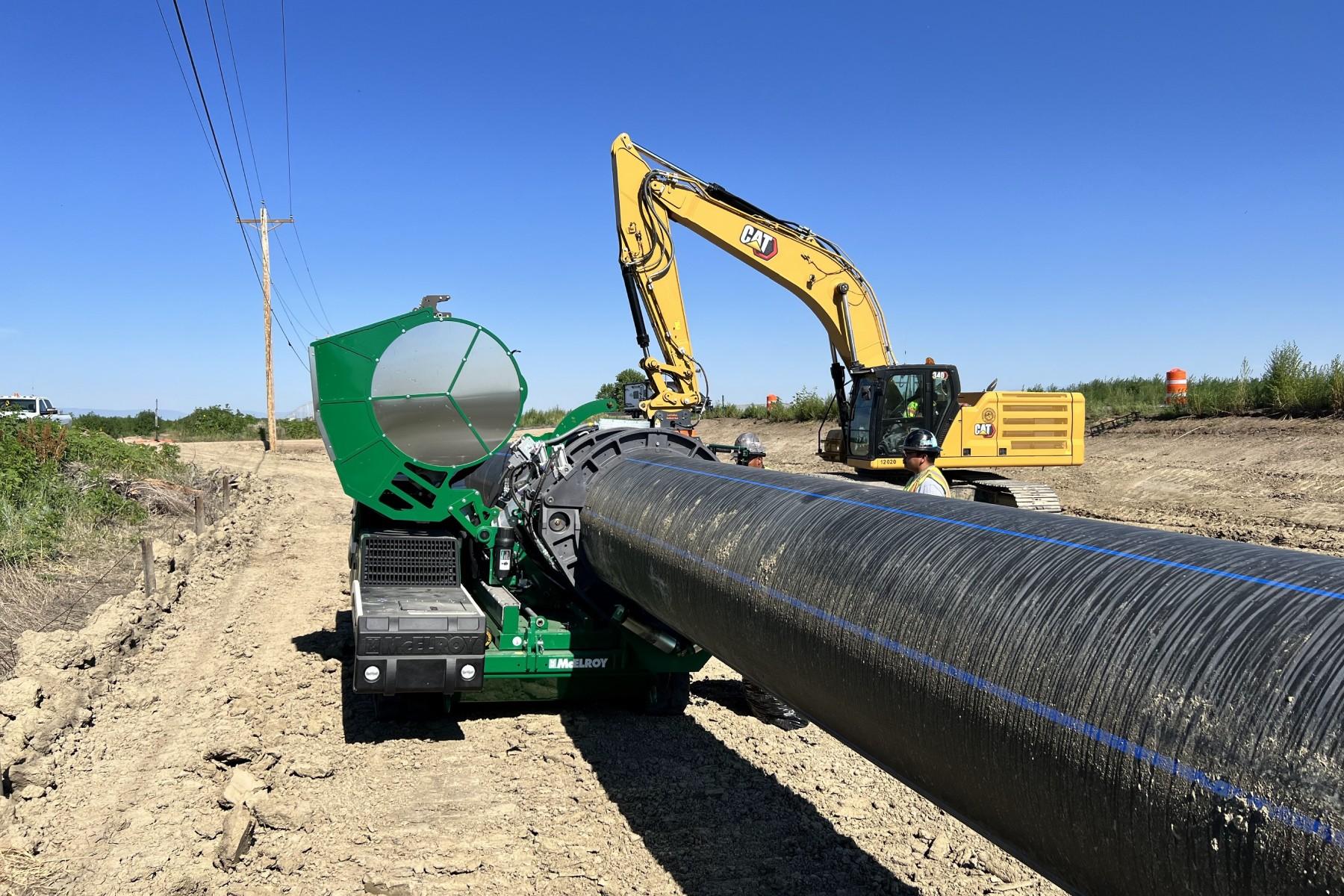
As the industry begins to recover from one of the hardest downturns in recent memory, disappointment is once again showing up inside city hall chambers, written complaints, and even in the form of a lawsuit.
Residents say there’s something different about the new projects: Drill pads are larger in scale. Whereas companies used to drill 2-4 wells per pad, technology now allows as many as 40 wells per pad.
In 2012, 7.65 percent of proposed facilities had eight or more wells. In 2016, the share of proposed “large” facilities jumped to 43.06 percent.
“I don’t think anything this size belongs with homes around it like this. I mean, that’s just nuts,” says Dawn Stein, a Greeley resident with a large oil pad near her home.
Industry representatives say more wells per pad is a good thing. It’s the result of a technological advancement known as horizontal drilling. Since pads are becoming more concentrated with wells, that means fewer disturbed acres of wildlife habitat in rural areas (where most wells are) or more untouched land near urban areas; and fewer homes with a well pad close by. It also translates into sending trucks on just a few roads instead of dozens.
So far, just a small number of large pads have been located inside neighborhoods.
“The minerals are where they are,” says Dan Haley, president and CEO of the industry trade group Colorado Oil and Gas Association. “If we’re in a spot where we can be farther away from a community, we definitely want to do that.”
A task force appointed by Gov. John Hickenlooper saw this problem coming.
On Jan. 25, 2016, the state approved rules to implement Task Force Recommendation 17, which adds extra considerations when companies build large facilities inside neighborhoods. The two communities that have tested this rule — Battlement Mesa on the Western Slope and Triple Creek in the Northern Colorado city of Greeley — say vague rule language and forgiving state and county regulators are giving companies a free pass. Regulators insist operators are following the rules; that the complaints come from a small group of residents and that they have required companies to take measures to cut down on noise, sound, and light disturbances, and to monitor air and water quality.
The View From The Neighborhoods
Carol Forman’s favorite part of her house is the back porch.
“The first thing people do when it’s summer is come in that door and head right out there, like, ‘Oh my gosh, it’s beautiful,’” she says.
That beautiful view is of the towering, striated rock faces of the Book Cliffs, and long stretches of the Colorado River and I-70. Carol Forman, along with her husband, Larry, live in Battlement Mesa, part of unincorporated Garfield County. Oil and gas operations have been in the area for more than half a century, and now, they’re coming less than a quarter mile from the Formans’ house.
Down a steep hill from their back porch, backhoes, bulldozers and water storage tanks have lined up over the past few months. Ursa Resources is constructing a pipeline and a pad that will house 24 wells to drill for gas under the mesa. A second pad is set to house 28 wells nearby.
Carol Forman says construction noise has woken her up at night, and she hopes a big apple tree in her backyard will soon block the view of the well pad.
“I just can’t wait for it to get leafed out in the summer,” she says. “But [the pad is] so close, it’s just like right below us.”

Nearly 188 miles away from Battlement Mesa, on the bustling and populous Front Range, drilling on a large 22-well pad has changed Dawn Stein’s view even more dramatically. Stein can’t hear very well, so sight is an important sense. Step outside of her Greeley home and you’ll find two sides boxed off by 32-foot beige walls. The white lattice of a drill rig appears about 1,000 feet away.
“Being boxed off from the world has been horrible,” she says. “All the traffic has been horrible.”
Extraction Oil & Gas put up the temporary walls to limit odors and noise from nearby operations. Semi-trucks regularly rumble past Stein’s bedroom on a newly constructed dirt road.
Residents in Triple Creek and Battlement Mesa have filed dozens of formal complaints about the oil and gas development plans in their neighborhoods. They worry about their property values, drinking water contamination and air pollution.
The goal of Recommendation 17 is to encourage discussion between industry and local governments when large well pads are built in urban areas. Before groundbreaking, operators in both communities followed a lengthy review process. In Battlement Mesa, Garfield County approved Ursa Resources’ well sites before the new state rules went into effect, and added 26 conditions for each of the two well pads. The Greeley operator, Extraction Oil & Gas, agreed to more than 60 conditions in its final permit from the state.
Still, some residents in both communities are unhappy with the results. Forty residents filed complaints about Ursa’s plans for two pads within Battlement Mesa, and more than 460 signed a petition asking Garfield County to relocate the pads outside the neighborhoods where they’re going in. In Greeley, Stein and other neighbors filed suit against the state Nov. 18, 2016.
“We’re trying to save a lot of people a lot of headaches and heartaches that we’ve been through by what we’re doing. By making them enforce what they should have done in this one in the first place,” she says.
The New Framework For Local Involvement
Rules the state adopted out of the work by the governor’s oil and gas task force are meant to get more local input in decisions about where to put large-scale oil and gas operations. However, the new rules put most of that power with the local government, not with residents.
Garfield County commissioner John Martin says the county approved the two new pad sites several years ago, and the right to drill in Battlement Mesa has been in place since the 1980s and “since the creation of the subdivision.”
“It’s on everyone’s title, and everyone should have read that title,” Martin says, noting that the county has tried to make the energy development as clean as possible.

Greeley Mayor Tom Norton also backed oil and gas company rights when the city council approved the Triple Creek project after a contentious meeting in March 2016. Norton acknowledged residents’ concerns — and a Greeley planning commission decision that originally rejected the Triple Creek plan.
“The facts were on the side of the applicant,” he says.
Frustrated residents say Recommendation 17 should have done more to consider alternative well pad sites. Triple Creek residents also wanted Extraction to go further in tempering the impact of oil and gas development. They wanted assurances in writing that the oil would be piped, rather than trucked, off site once wells started producing.
Extraction Oil & Gas declined to comment for this story. The company deferred questions to the Colorado Oil and Gas Association.
“Just because one operator can do something in one location doesn’t mean that another operator can do it at a different location,” says COGA president and CEO Dan Haley.
Which is the case back in Garfield County. Ursa Vice President Don Simpson says the geology under Battlement Mesa makes drilling from further away nearly impossible, and would not allow Ursa to extract all of the gas it has rights to.
“Certainly we would love to back up further away from the community and access our minerals, that would be awesome,” Simpson says. “But Mother Nature has not allowed it.”
State regulators, led by Colorado Oil and Gas Conservation Commission director Matt Lepore, considered the new rules and approved both companies’ applications.
Lepore explains when a company owns mineral rights, they’re legally entitled to extract them directly on the land above. It may not be feasible to purchase another plot of land nearby. And it may be too expensive to build pipelines — although the gas in Battlement Mesa will be moved through pipelines, and Lepore says Extraction Oil and Gas is working toward oil pipelines in Greeley.
“Citizens disagree. I get that,” Lepore says. “You want the operator to spend more money... to do something that’s not required.”
In both Battlement Mesa and Triple Creek, companies’ well pads are further away from homes than the minimum 500-foot setback required by state law. The adopted rules did not extend those minimum distances (known as setbacks), despite objections from task force members like attorney Matt Sura, who often represents communities impacted by oil and gas operations.
“A noise wall in the middle of a neighborhood looks absurd,” Sura says, referring to the padded, sound-deadening walls, like the two erected next to Dawn Stein’s Greeley home.
“The best mitigation, the only way to eliminate the impacts is to move the location away from residential areas.”

The Next Battleground Will Be More Urban
The city and county of Broomfield is destined to be the third test case for siting large-scale oil and gas well pads in neighborhoods. Extraction Oil & Gas wants to build four large pads — some with as many as 40 wells — along the city’s northern flank.
Oil development was on pause for years while courts weighed the legality of a voter-approved moratorium. In May 2016, The Colorado Supreme Court struck down Broomfield’s moratorium along with similar measures in Longmont and Fort Collins.
Unable to stop the development through a moratorium, city officials are in the middle of a closely-watched debate on how to best prepare for drilling. Hundreds of residents have crowded into city council meetings to discuss the topic.
In September 2016, Broomfield was surprised to learn future homes in neighborhoods it approved could be between 500 and 1,000 feet from a 40-well pad. Officials obtained the details by following a second task force recommendation adopted in 2016, Recommendation 20.

“Had we known in a five year development plan that this was going to be much larger, this most likely could have been developed differently by the builders,” says mayor pro tem Greg Stokes.
In January 2017, Extraction proposed reducing the number of wells in that large pad from 41 to 29. The exchange prompted a need to do even more comprehensive planning before Extraction Oil & Gas starts drilling.
The most immediate question facing Broomfield is whether to impose a five-month drilling moratorium while this planning occurs. A recently drafted resolution by Stokes, which the city council could weigh Feb. 28, calls for a committee to be formed for an in-depth review of future drilling. That process also calls for the committee to find alternative locations for drill pads if enough concerns are raised.
For Battlement Mesa And Triple Creek The Fight Continues
There are facts that residents, the industry and regulators all agree on: More people will move to Colorado, and the pace of industry development will increase as the price of oil goes up. Colorado will see more test cases for large-scale well pads in the future.
The details around how best to prepare for this future are up in the air.
If you ask the Colorado Oil and Gas Association, the two test cases in Battlement Mesa and Triple Creek aren’t enough to determine whether the new rule is working. It’s “far too early” to divine if any changes are needed, says COGA’s Dan Haley. After a few years and a few projects going through the process, he says the industry “obviously would be willing to come to the table to see what we can do to make these work for communities where we’re trying to operate.”
Both Haley and the COGCC’s Matt Lepore say more advance planning between cities and the industry is essential. Recommendation 20 outlines a framework for cities to overlap their five-year development plans with those of the industry.
“A big part of the task force itself and the rulemaking that came out of that was trying to encourage local governments to be more mindful of the mineral estate development when they’re planning these communities,” Lepore says. “That’s where this really should start.”
Ultimately this means that cities and towns could coordinate drilling before neighborhoods or big box stores are built to minimize conflicts, says Lepore. One of his mantras is “no surprises,” since he understands that a drilling rig showing up unexpected is “not a pleasant surprise.” And yet...
“Is that going to make them OK when the reality of a 20-well pad and associated storage tanks is proposed for their neighborhood? Not so sure,” Lepore says.

In Battlement Mesa, Ursa Resources and the developer who owns the surface rights to the pad down the hill from the Formans' house had sought to put an injection well there — shooting wastewater that comes with oil and gas back underground — but has since asked the county for time to adjust and resubmit their proposal. Ursa’s Don Simpson says the company considered it a “really good spot.” Naturally, the Battlement Mesa citizens group and their attorney, Matt Sura, disagreed.
“The idea that you’d locate that in a residential neighborhood, and in this case directly upstream from the community’s water intake, is unconscionable.” Sura says.
In two letters, the Colorado Department of Public Health and Environment recommended moving the injection well, writing that the proposed location created “an unnecessary long-term risk for a spill or release to potentially impact the public water supply.” Garfield County’s staff also recommended against the proposal for the injection well.
In a news release, the Battlement Mesa citizens group sees the change in Ursa's plans as “a victory for residents.” The process will start anew, since Ursa wants to put more wells on more new pads in Battlement Mesa, including their intended plan for the injection well when it is resubmitted. Don Simpson thinks Ursa has come up with “a better plan,” telling the Grand Junction Daily Sentinel that they are “always looking at different locations, better locations.”
In Triple Creek, Dawn Stein continues to live right by a large-scale facility. “It’s very disheartening, it’s depressing,” she says of her situation. She’s hopeful that the lawsuit could relocate the dirt access road further from her home.
The lawsuit also calls for the COGCC to vacate its permit approval, and calls for Extraction Oil & Gas to “select and meaningfully evaluate” alternative production facility locations further from homes.
When asked what advice she has for other neighborhoods that go through the same review process for large-scale facilities, Stein doesn’t hesitate.
“Fight at your local level,” she says. “Because once it gets to the state level you don’t have a shot.”
Editor’s Note: This story was updated Feb. 9, 2017, following Ursa’s withdrawal of their plan for their injection well and to add reaction from the Battlement Mesa citizens group.








